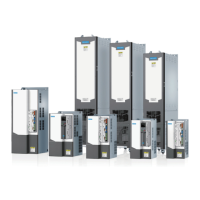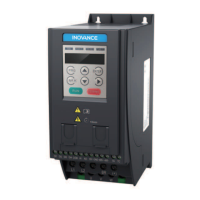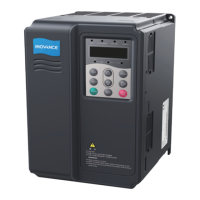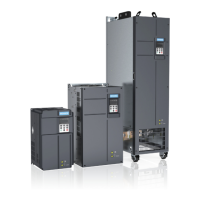Function Applications
-538-
● An E-stop is often provided in a machine to enable the operators to take action to prevent
accidents when they see a hazard in an unexpected situation.
● The design requirement for an E-stop differs from that of a safety interlock. Generally, the E-stop is
required to be independent from any complex or intelligent control. It may use purely
electromechanical devices to either disconnect the power or initiate a controlled rapid stop using
other means such as dynamic or regenerative braking.
Note
When using a permanent-magnet motor, reluctance motor, or non-salient induction motor, there is a small possibil-
ity that a fault in the drive power stage could result in a momentary alignment torque in the motor, even if the STO
function has been correctly activated. The drive system can produce an alignment torque which maximally rotates
the motor shaft by up to 180° electrical, for a permanent magnet motor, or 90° electrical, for a non-salient pole in-
duction motor or reluctance motor. This possible failure mode must be allowed for in the machine design.
The motor could rotate by a maximum of 360
º
/p (where p is the number of pole pairs).
The design of safety-related systems requires specialist knowledge. To ensure that a complete control system is
safe, it is necessary for the whole system to be designed according to recognized safety principles. The use of indi-
vidual sub-systems such as drives with Safe Torque Off functions, which are intended for safety-related applications,
does not in itself ensure that the complete system is safe.
● In case of emergency stop, the STO function can be used to stop the AC drive. In normal operating
mode, the STO function is not recommended to stop the AC drive. If the STO function is used to
stop a running AC drive, the AC drive will stop gradually. If this is unacceptable, the system should
use a correct mode to stop the AC drive rather than stopping the STO function.
The above safety precautions are the application guidance for the STO function, and also the design
guidance for safety systems of mechanical control.
Note
It is the responsibility of the designer of the end product or application to ensure safety and compliance with rele-
vant regulations.
Risk Assessment
● When the STO function is used, a risk assessment of the drive system must be carried out in
advance to ensure compliance with the standard safety integrity level.
● Even when the STO function is in use, there may be some residual risks. Therefore, safety must
always be considered when conducting risk assessment.
● The motor will rotate when external forces (such as gravity on the vertical axis) are applied during
use of the STO function. A separate mechanical brake must be used to secure the motor.
● If the drive fails, the motor can work within 180°, ensuring safety even in dangerous situations.
● The number of revolutions and movement distance for each type of motor are listed as follows.
■ Maximum revolution of the rotating motor: 1/6 (rotation angle of motor shaft)
■ Maximum revolution of the traction motor: 1/20 (rotation angle of motor shaft)

